Is The Environmental Movement Moving Online?
First published in Sanctuary Asia,
Vol. 44
No. 10,
October 2024
Sanctuary’s Lakshmy Raman and Shatakshi Gawade tap into the immense potential of social media and online platforms and speak to conservationists and content creators about ways in which this new media is being channelled for the greater good. However, these powerful tools can be misused, caution environmental creators, while emphasising to next generation environmental warriors that activism cannot be limited to ‘online’ battlefields, and would need to be translated into on-ground action.
Just a couple of decades ago, promoting a ‘fresh-off the press’ coffee table book published by Sanctuary meant arranging an event at a local ‘Crosswords’ bookstore, a library, or faxing press releases. Today, it means using Canva to design a beautiful creative, uploading it on social media at the right time, collaborating with influencers, and sharing testimonials, reviews, reels and videos online.
And then there’s Sanctuary magazine. Researchers, authors, photographers, even our own staff, wait with bated breath to feast on the brilliant images and moving words that constitute every edition. We still remember pasting the two-page, glossy wildlife images from Cub on our walls – the thrill of wildlife in your home and hand is still unbeatable. The print magazine had to take a break as COVID crippled us all. Following intense planning and requests from readers, we returned to print in June 2024! We won’t lie, the demand for print in an age of digital media was heartwarming and curious.
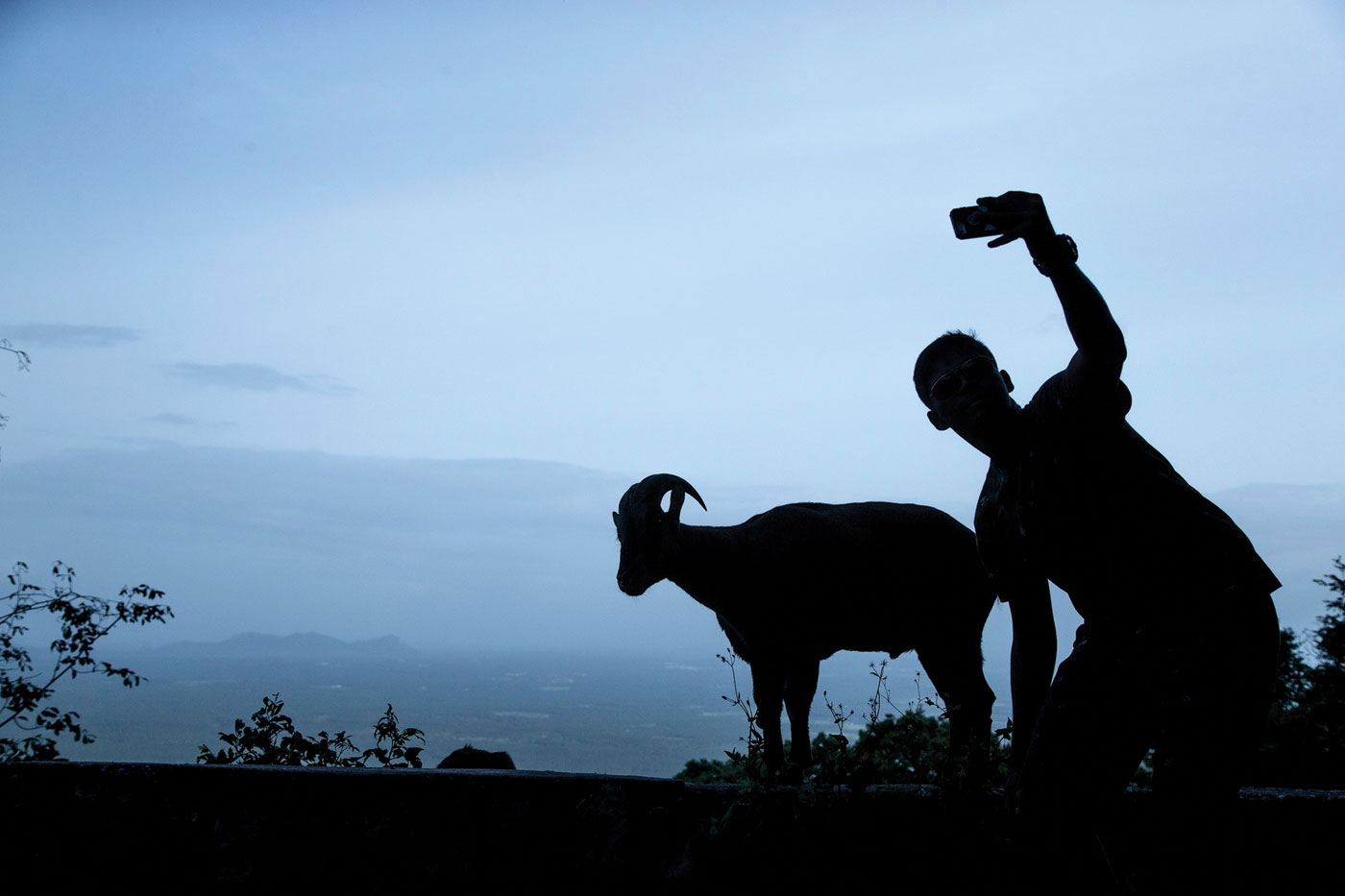
Posting images of biodiversity online fuels the demand for the same experience or sighting. It carries the risk of revealing locations, which draws more people, some relying on unethical behaviour to get perfect images, thus endangering wildlife. Photo: Agasthya Karthikeyan/Sanctuary Photolibrary.
Today, as we flip pages delightedly, our phone is never far away… it buzzes, and the screen lights up, allowing us to virtually immerse in nature within seconds. It could be a green, mysterious forest in Central India. If we close our eyes, we can still see the black panther prowling to soft, suspenseful music in a reel, or a breathtaking bird’s eye view of elephants in the tea garden. Watching news flash past in a story prompts an instant response – we can sign that petition now, or walk onto the street with hundreds of others and demand justice for the planet now.
Social media and online news channels offer great reach and wield immense power to connect with large sections of society. Today, conservationists to photographers, media outlets to small-scale publications, activists to government are increasingly leveraging varied online communication channels. Unlike traditional newspapers or magazines, the reaction and responses are often instantaneous – whether in generating empathy and support or outrage and defiance.
From climate campaigns to viral videos of animal abuse, from stunning images of wildlife to stark stories of mining – environmental activism is more mainstream and visible today than ever before. Instagram even facilitated the discovery of a new Himalayan snake species by a herpetologist, who spotted an unidentified snake image shared online. There are influencers who are household names, and there are media houses and publications (including Sanctuary) harnessing the power of online media to reach new-age consumers who receive and process information differently – whether it’s Whatsapp/Instagram/Facebook/Youtube or X (formerly Twitter).
While social media can be an empowering medium, it can oversimplify messages, sensationalise issues and fail to spark real change, creating a false narrative that people are making a real difference by posting online. Hashtags to express solidarity might assuage our guilt of ‘business as usual’ but will not offer any real value, if it is not backed by commitment and action for the cause. Posting images of biodiversity online fuels the demand for the same experience or sighting. It carries the risk of revealing locations, which draws more people, some relying on unethical behaviour to get perfect images, thus endangering wildlife.
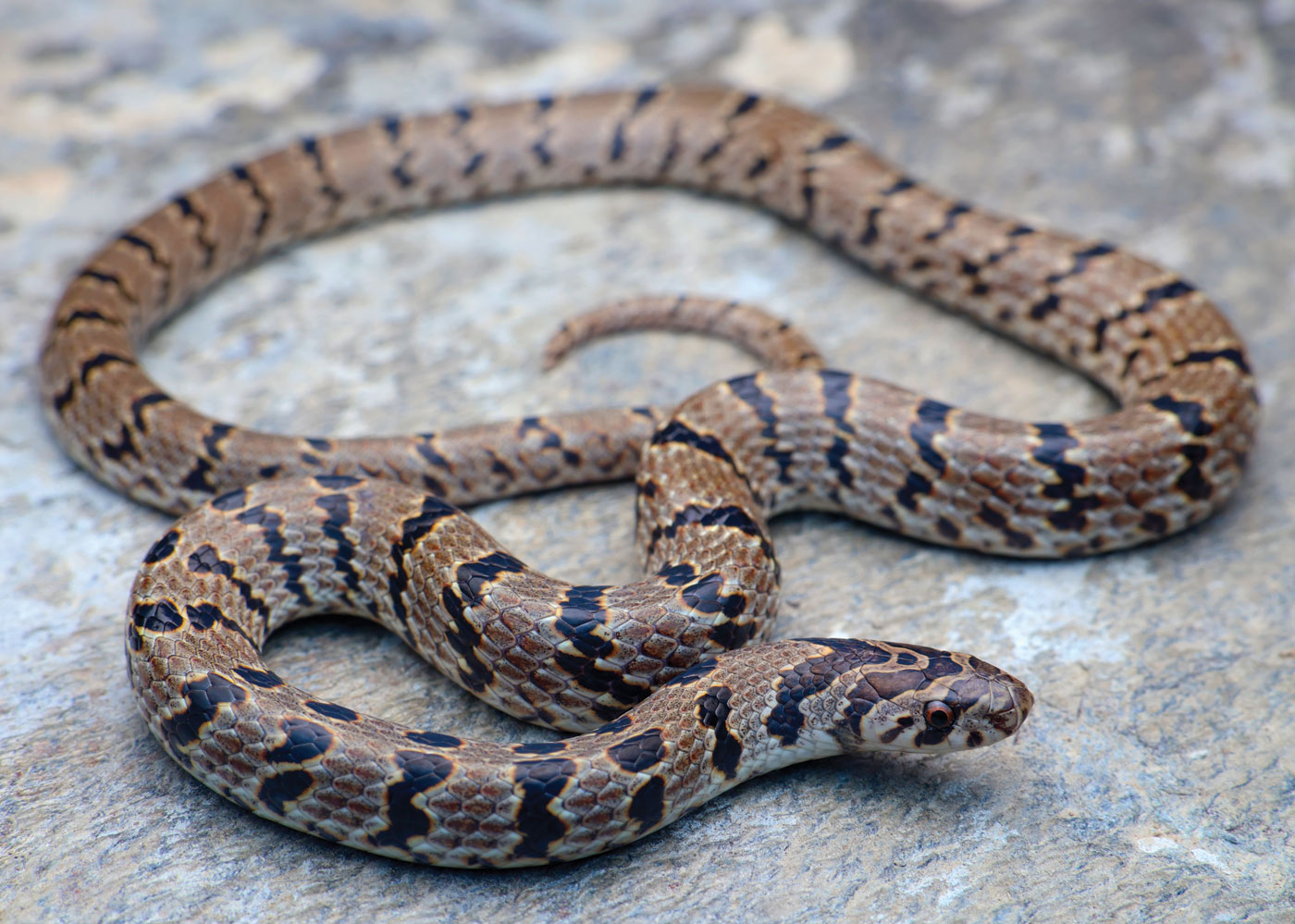
Instagram facilitated the discovery of a new Himalayan snake species by herpetologist Zeeshan Mirza, who spotted an unidentified snake image shared online by Virender Kumar. Photo: Virender Kumar.
Social media should be a platform for genuine and respectful discourse, to grow as individuals and influence perspectives, and not be limited to ‘performative’ activism. It is also vital that companies not only have social media policies and strategies for the growth of a business or organisation but also pay equal attention to navigating digital spaces ethically.
Social Media For Good. The Light And The Tunnel
Mumbai-based writer and Co-creator of the volunteer-run environmental collective ‘Let India Breathe’, Yash Marwah, is a great example of how social media can serve as a megaphone for voices that might otherwise go unheard, and amplify causes and campaigns that seek to create a better, more sustainable future. In his eight or so years of activism, he has harnessed social media for opportunities for growth and change. From promoting a cleaner, greener India to uncovering greenwashing tactics of governments and corporates, he says it has helped the Let India Breathe community find its space by careful navigation of this world filled with academia, jargon and gatekeeping. In his words, “During the Save Aarey campaign, some of our volunteers responded to over 5,000 comments and direct messages, and during the Withdraw Draft EIA 2020 campaign, we co-created a community of 100 odd organisations that fought the draconian draft not just online but on the ground too. The Save Mollem campaign saw us as solidarity workers, showing India and the world how the Goa of their dreams is being held by a string with the efforts of a few grassroots warriors.”
Goa-based artist and the Co-coordinator of the Amche Mollem Campaign, Nishant Saldanha, concurs. He explains how the campaign leveraged social media to inspire and spread awareness. “The Amche Mollem Citizen’s Campaign, which began in June 2020, was driven by the need to express citizen outrage over the illegal felling of 2,000 trees, with thousands more at risk owing to intrusive infrastructure proposed to penetrate the Mollem National Park and Bhagwan Mahavir Wildlife Sanctuary. These permissions were granted by the Central government during the world’s strictest lockdown, with no due process or mandatory public consent, leaving the citizens of Goa, who hold their forests in high regard, shocked and furious. A collaborative effort emerged from scientists, artists, and lawyers, eventually becoming a large-scale online citizen campaign inspired by the ardentness of Chipko, the innovative dissemination campaigns of the Black Lives Matter movement, and Goa’s rich history of environmental resistance.
Four years and a few Supreme Court victories later, the Mollem campaign has created a blueprint for online engagement and on-ground action. Interaction with Amche Mollem typically involves small offline or online actions beyond social media, demonstrating how individual efforts, when well-planned, can lead to significant collective victories, shares Saldanha.
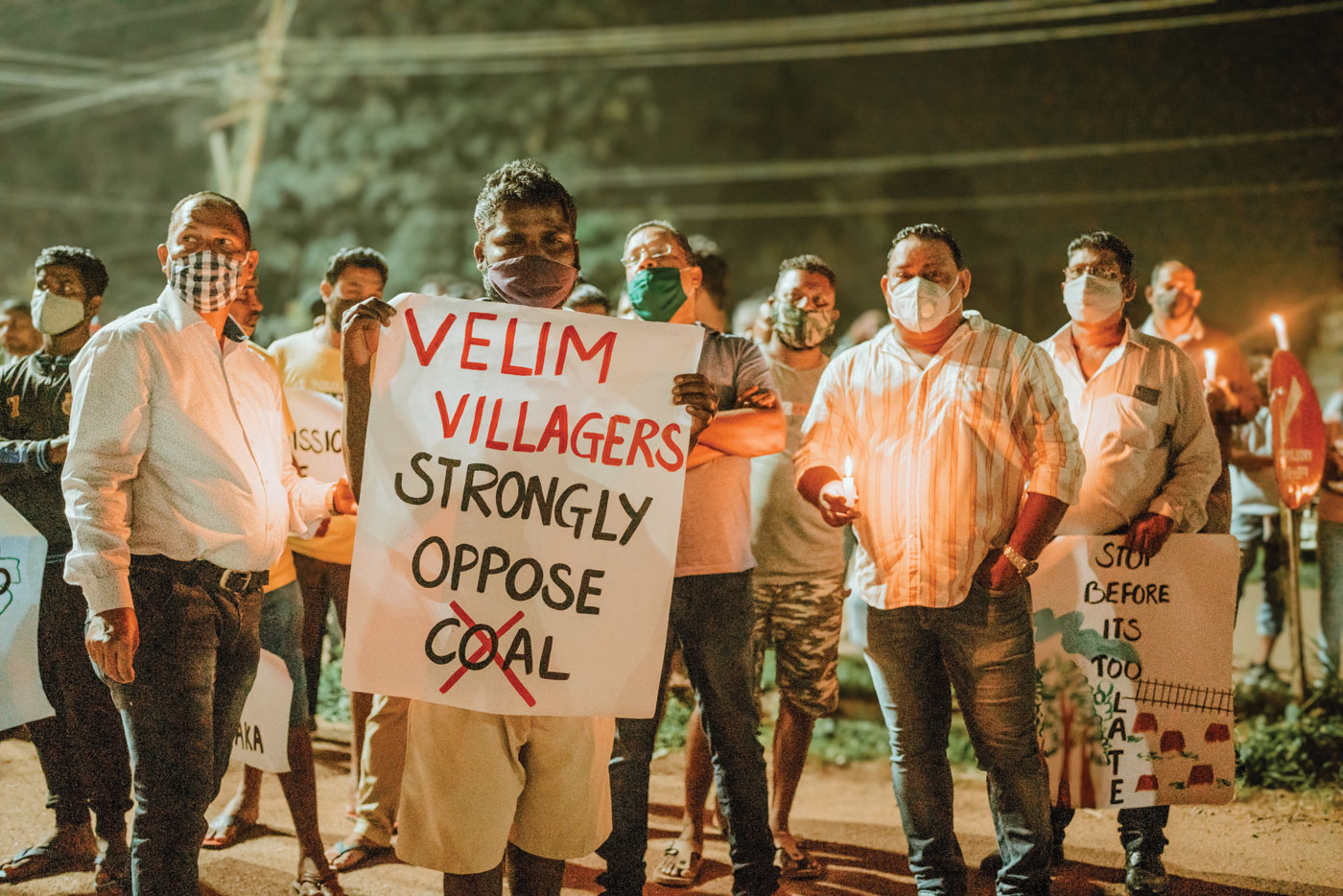
The Amche Mollem campaign, Fridays For Future India and Save Dibang Valley are successful campaigns that leveraged social media to inspire and spread awareness. Photo Courtesy: Chevon Rodrigues.
“Our Instagram, X, and Facebook accounts are not only active bulletin boards for the campaign but also nodes for disseminating complex scientific and legal strategies, made accessible through art, illustration, and comics. Viewers can find court updates, instructions on how to engage with their MLAs, hold them accountable in the Assembly, and steps for writing, signing, and sharing letters to authorities and public petitions, and guidance on filing a Public Interest Litigation (PIL),” he explains. The campaign also hosts regular talks and releases scientific explainers on topics ranging from the dangers of forest fragmentation to the flaws in poorly constructed Environmental Impact Assessments (EIAs), or the importance of wild fig trees in our ecosystem.
Saldanha adds, “Over the past four years, we have demonstrated how science and politics are crucial avenues for everyone to walk down together toward a secure future for all. Amche Mollem encourages you to be an active citizen – someone who holds truth to power, upholds democratic values, and does something about it with whatever means they have. It is not about ‘activism’, but about what ordinary citizens living in a democracy can do everyday. Underscoring all this is our politics of respecting and caring for each other, and a deep love for our protected and unprotected commons and all the inhabitants of our tiny state.”
When restrictions were lifted and the threat of the pandemic eased, the Amche Mollem Campaign took to the streets to express solidarity. Their online materials transformed into portable zine libraries shared at community tables and classrooms, and public engagement became part of their knowledge-sharing process. Saldanha concludes, “We think of digital and physical spaces as equally important for expression, understanding that strong storytelling and clear objectives are crucial to sustaining a campaign in today’s media-saturated 21st Century.”
An Open Resource For All
Founder-Director of the Veditum India Foundation, Siddharth Agarwal, is grateful for the incredible resources social media provides. He says that as someone intending to work in the conservation space with no access to contacts in legacy networks and organisations at the beginning of his journey in 2015, the virtual space was a game changer. He adds, “In the past decade, I’ve often been amazed by the kind of solidarity that can be built on online platforms, giving life to new conservation projects, making and amplifying environmental campaigns, fundraising, and fostering countless collaborative efforts and discoveries.”
Fridays For Future India is a youth-led, grassroots movement that campaigns for climate and social justice with its pan-India presence of decentralised city chapters and online social media reach. FFF India’s Dinesh is vocal about social media as a vital tool for building awareness and interest among people in climate justice, especially among people who are unaware of it. However, he says, “Social media is one half of our two-pronged approach towards campaigning, which involves on-ground action via campaigns led by our city chapters; our handles offer a medium to document our work and get more people to engage with our campaigns, or join our chapters. They’re also critical in raising awareness about issues in relatively short periods compared to traditional media such as TV news or newspapers. That said, we understand that relying solely on social media isn’t ideal for long-term, sustained campaigns; strong on-ground campaigns and narratives are essential to complement our online reach.”
Sanctuary’s Digital Persona
Social media has been a game-changer for conservation efforts, providing a powerful platform to reach millions, inspire action, and raise awareness about critical environmental issues. At Sanctuary, we’ve witnessed firsthand the positive impact of using social media to share stories, connect with like-minded individuals, and mobilise support for various wildlife campaigns and conservation initiatives.
Gone are the days when wildlife photography required long lenses and heavy equipment. Now, anyone with a smartphone can capture stunning shots with a simple point-and-shoot. This democratisation of wildlife photography has led to a surge in shared natural history moments. However, the allure of social media likes and shares has driven some individuals to take dangerous risks – approaching, feeding, or disturbing wildlife for that ‘perfect shot’. Our series on responsible tourism, wild animals in filth and wildlife photography ethics have sparked great conversations, encouraging viewers to introspect, identify unethical practices online, and inspire responsible behaviour.
The digital age offers immense potential, but it also presents challenges. In today’s age of instant gratification, where readers and viewers often taper off at the one minute mark, it has become essential to condense information. However, a majority of conservation issues are complex and multifaceted. Quick opinions leave behind a trail of bouquets and brickbats, which can lead to the spread of misinformation. Our campaigns address conservation issues and provide practical actions that concerned citizens can take, both online and offline. Typically, online support or armchair activism takes precedence over in-person activism, but it serves as a crucial starting point to raise awareness. There is strength in numbers – by sharing information, donating, or signing petitions, one can contribute to positive social impact, but that is only the beginning. We must also get off our chairs and get our boots on the ground. As Jane Goodall, Sanctuary’s Wildlife Legend Award recipient, said, “
Only if we understand can we love. Only if we love will we help. Only if we help shall they be saved.”
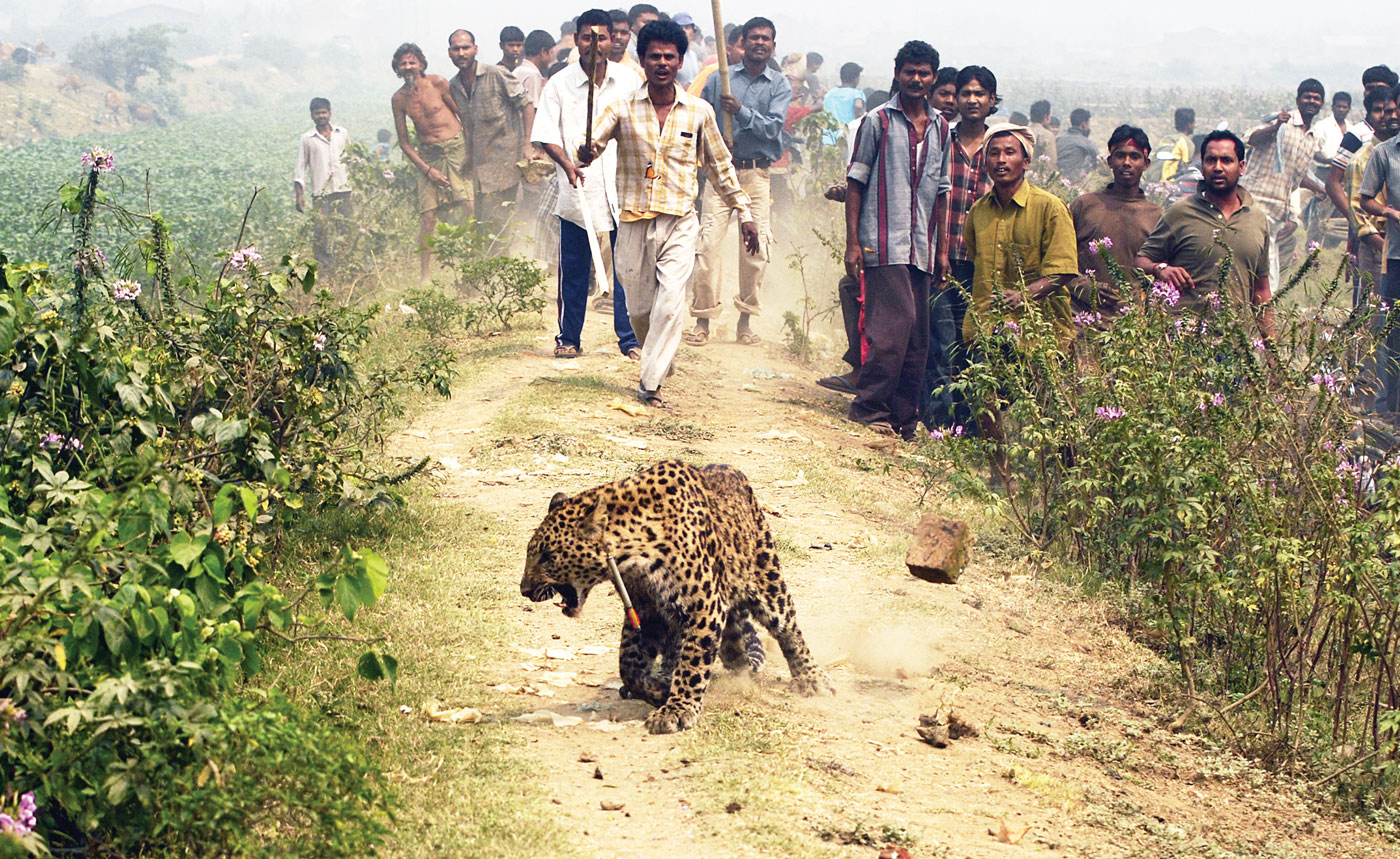 This Sanctuary Wildlife Photography 2016 award-winning image by Biju Boro is one of our most supported posts. In the last decade, human-wildlife conflict images and videos showing mobs attacking the intruding animal with sticks, stones and firecrackers have gone viral. Such visuals seek to force officials, media and the public to delve deeper into the underlying causes of such conflict and go beyond its ‘shock’ value. Photo: Biju Boro/Sanctuary Photolibary.
This Sanctuary Wildlife Photography 2016 award-winning image by Biju Boro is one of our most supported posts. In the last decade, human-wildlife conflict images and videos showing mobs attacking the intruding animal with sticks, stones and firecrackers have gone viral. Such visuals seek to force officials, media and the public to delve deeper into the underlying causes of such conflict and go beyond its ‘shock’ value. Photo: Biju Boro/Sanctuary Photolibary.
Moving forward, we plan to continue leveraging social media as a tool for conservation while addressing its potential pitfalls. We’ll prioritise fact-checking and promoting critical thinking among our followers. Additionally, we’ll focus on creating engaging content that inspires action beyond likes and shares, such as volunteering opportunities, citizen science initiatives, and advocacy campaigns. In the wise words of our Editor Bittu Sahgal, “
Don’t get angry. Get involved!”
– Malaika Shah, Social Media Editor, Sanctuary Nature Foundation
The Power Of Influencers
Brands are increasingly relying on influencers to market their products and services. Worldwide, more than 15 billion dollars is predicted to be spent on influencer marketing. However, beyond this, authentic influencers with a social conscience can truly make a difference. Take UN Goodwill Ambassador Dia Mirza, for example. On August 1, 2024, she posted, “It is high time we pull our socks up before Mother Earth decides to shut us down forever,” on Instagram on Earth Overshoot Day. It exemplifies the kind of responses her social media posts focussed on the environment receive. Mirza says, “I have been a part of Sanctuary Nature Foundation’s ‘Kids for Tigers’ campaign for a while, and children still come up to me to talk about a film I made way back in 2016. I have learnt that leveraging the power and reach of social media is the best way to spark conversations about issues that usually do not get enough traction in the news cycle. Many people who engage with me on my social media handles share stories of what they’re doing to care for the Earth, or draw attention to specific ecological problems they are a witness to. They think of me as a fellow Earth citizen, who is as concerned as they are about climate change, extreme weather events, air pollution, and the proliferation of plastic in water and food systems.”
As the Brand Ambassador of the Wildlife Trust of India, she interacts with many green warriors on the ground, who discuss with her, among other things, her social media posts about nature conservation and the importance of protecting wildlife habitats. Mirza is delighted by the response her posts receive, saying, “The point they make is that apart from working diligently to secure India’s natural heritage, we must also spread awareness about the importance of conservation. The relationship that I share with this very special community that follows my work and posts is however not didactic or one-sided. I also learn a lot when I host climate champions and change makers such as Nidhi Pant on ‘Down to Earth with Dee’, my Instagram live sessions. Nidhi, for instance, is the co-founder of Science For Society or S4S Technologies, which is a near-farm gate food processing platform converting farm losses to value-added products for the F&B Industry.”
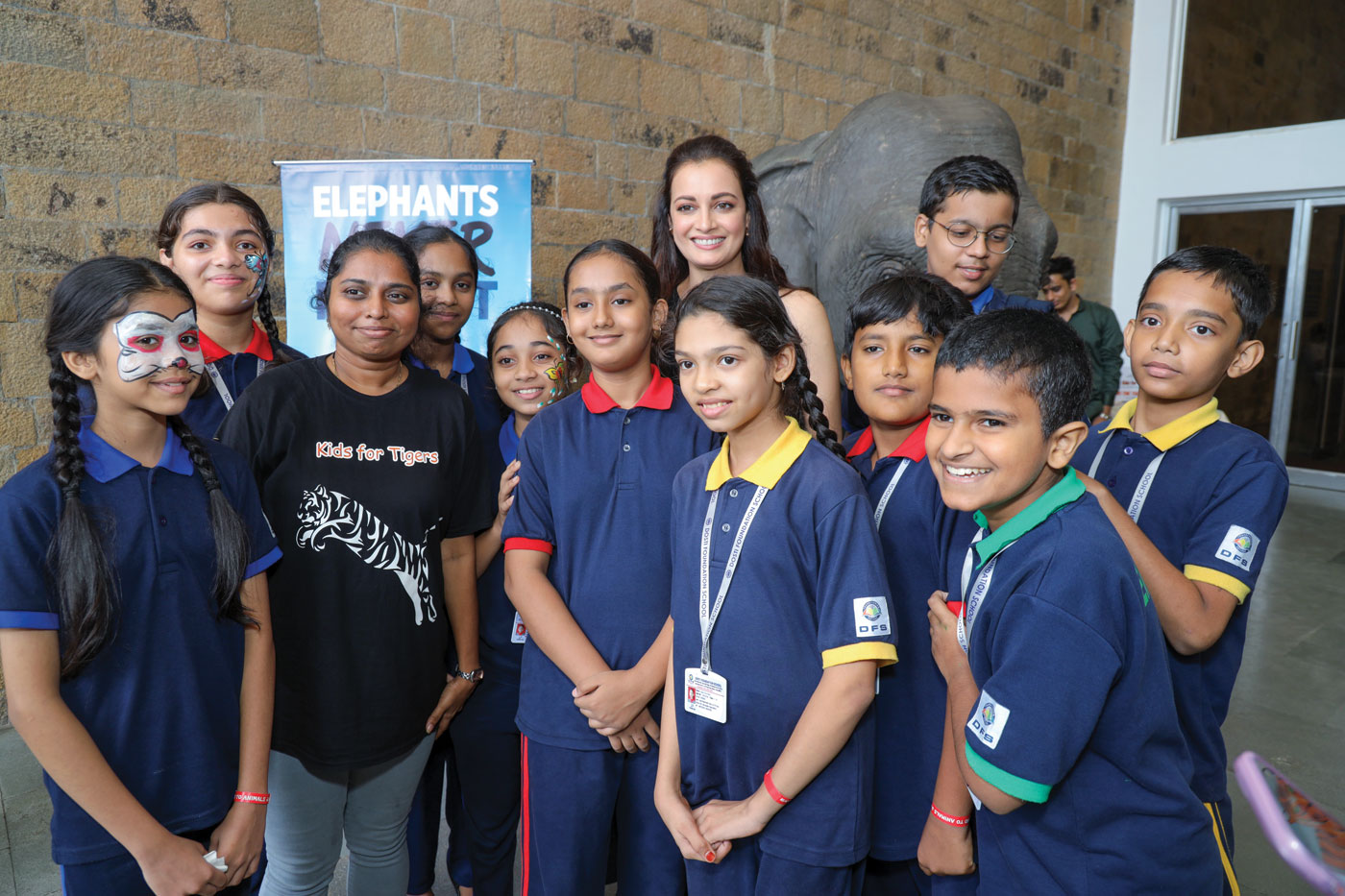
Dia Mirza is a long time supporter of the Sanctuary Kids for Tigers campaign. Closely connected with the younger demographic, she uses her social media presence to further critical climate change and nature conservation messages. Photo: Sanctuary Photolibary.
She adds, “I became aware of the importance of using my platform in a meaningful way in 2000 when, as a teenager, I was thrust into the limelight on a global platform. I discovered that, as a public figure, my voice could resonate and that I could use it to make a difference. Today, as a UN Environment Goodwill Ambassador and United Nations Secretary General’s Advocate for Sustainable Development Goals, what I say and how I champion the Earth with my actions, have attained an added layer of responsibility. For example, the ‘Say NO to plastic’ initiative was not just a campaign for me but an opportunity to communicate in a personal way about what each one of us could do to reduce single use plastics in our lives. I now receive so many messages about how micro decisions like a travelling water bottle and reusable shopping bags can bring about a macro shift. When I meet young people eager to partake in the climate discourse, they talk to me about issues that my social media posts have brought to their notice. This gives me more joy than I can put into words and reaffirms my belief that, when utilised with honesty and intentionality, communication is a superpower that can shift narratives from helplessness to hope.”
Creating The Right Content
Generating and maintaining good content and gaining a robust following is hard work. Authenticity is vital. Wildlife photographer and content creator Praveen Purohit is using the power of social media to make nature content accessible to a larger audience. Growing up in Mumbai, he relied on wildlife documentaries for his daily fix of nature. The stunning vistas on television, gave him the courage to quit his job as an engineer to dedicate his life to the Himalaya.
“I wanted to share information about Himalayan birds and wildlife in a language that even young children could understand, because I have always believed that if the world has to be changed, the best place to start is with kids. I began making short- and long-form content about birds and nature. Although I have been a wildlife and landscape photographer for a decade, it’s only when I started making videos and reels, that I was able to reach the younger generation. Kids in remote villages around me are now able to appreciate the beauty around them, and identify birds. This was impossible when I was a child, but thanks to social media platforms, creators can reach a kid in a remote corner of the Himalaya or even the world, and hopefully ignite a fire in them.
I have seen the impact a teacher can have on a student, and I think social media can also have the same effect. A person who can influence people in person or on social media wields immense power. If what you say impacts even a single individual, that’s a tremendous responsibility. Considering the ease with which anyone can make and share content on social media today, these platforms should be used judiciously.”
Content creator Kayden Anthony did not anticipate reaching so many people through Instagram, especially in the wildlife space. When his posts began garnering attention from a broader audience, it encouraged him to post more consistently. He says, “The most notable impact for me has been seeing Indian audiences develop an interest in wildlife and be willing to learn more about it, which has evolved over the years. Growing up, we were inspired by channels such as Nat Geo, Animal Planet, and Discovery, which showcased amazing wildlife but through a non-Indian lens, and often missing nuances. When I discuss species such as the bamboo pit viper or the bush frog instead of rattlesnakes or black mambas, it was surprising to see how these topics resonated with people fascinated by the animals in their own backyard. Many had seen these creatures but didn’t know what they were, so there has been a positive impact in educating the masses.”
A Business Game-Changer
The advertising world has also seen a sea change with the advent of social media. Corporates’ print advertising budgets have been slashed, impacting print publications dramatically. Businesses now use social media influencers to reach their target audience.
Founder of safari tour outfit Wilderlust Expeditions, Shashank Birla, is enthusiastic about how social media was a game changer in his journey. The very genesis of his safari tour outfit lies in the platforms of Facebook, Instagram, YouTube and WhatsApp. He says that unlike traditional media, these platforms provided targeted, measurable reach to showcase the experiential aspect of their tours, including photo stories and movies of each of their trips. Shashank says, “Testimonials on our Google/Tripadvisor pages bolstered credibility, and suddenly, it was possible for people who had no prior experience with us, to build trust and provide us an opportunity to host them on safari.” He explains, “Managing a safari tour is only possible with the collaboration of multiple partners. In the safari movies we showcase on social media, we have sought to highlight the role and importance of local safari guides and drivers, as well as the efforts of staff at the accommodation guests reside at. This, we believe, provides a more accurate picture of what really makes a safari experience memorable – not just the wildlife, but the people involved in making it happen. With every guest, we always seek to share conservation stories of the park and the challenges it faces, and we often find these stories stay with the guests, as they share them in the movies we film as well as with their circle of family and friends, thus increasing awareness through the compounded reach of word-of-mouth and social media.”
Richa Kedia, a former chemical engineer, quit her job to become a wildlife artist and illustrator. For her, social media has been an absolute boon. She confesses that as an introvert who finds networking daunting, social media has been a powerful tool to showcase her art, reach out to the right people, and get projects.
“When I moved from the corporate world to the world of wildlife illustration, I had no contacts or background in this field. Initially, all my projects were through social media, mostly Instagram and Facebook. I could not have made it without it,” she says. She adds that it has also been an effective way to spread awareness about wildlife and related activities, which is the driving force behind her work. “So any exhibition, workshop or other event I conduct is advertised through the medium. It is easy to reach out to people with similar interests on social media.”
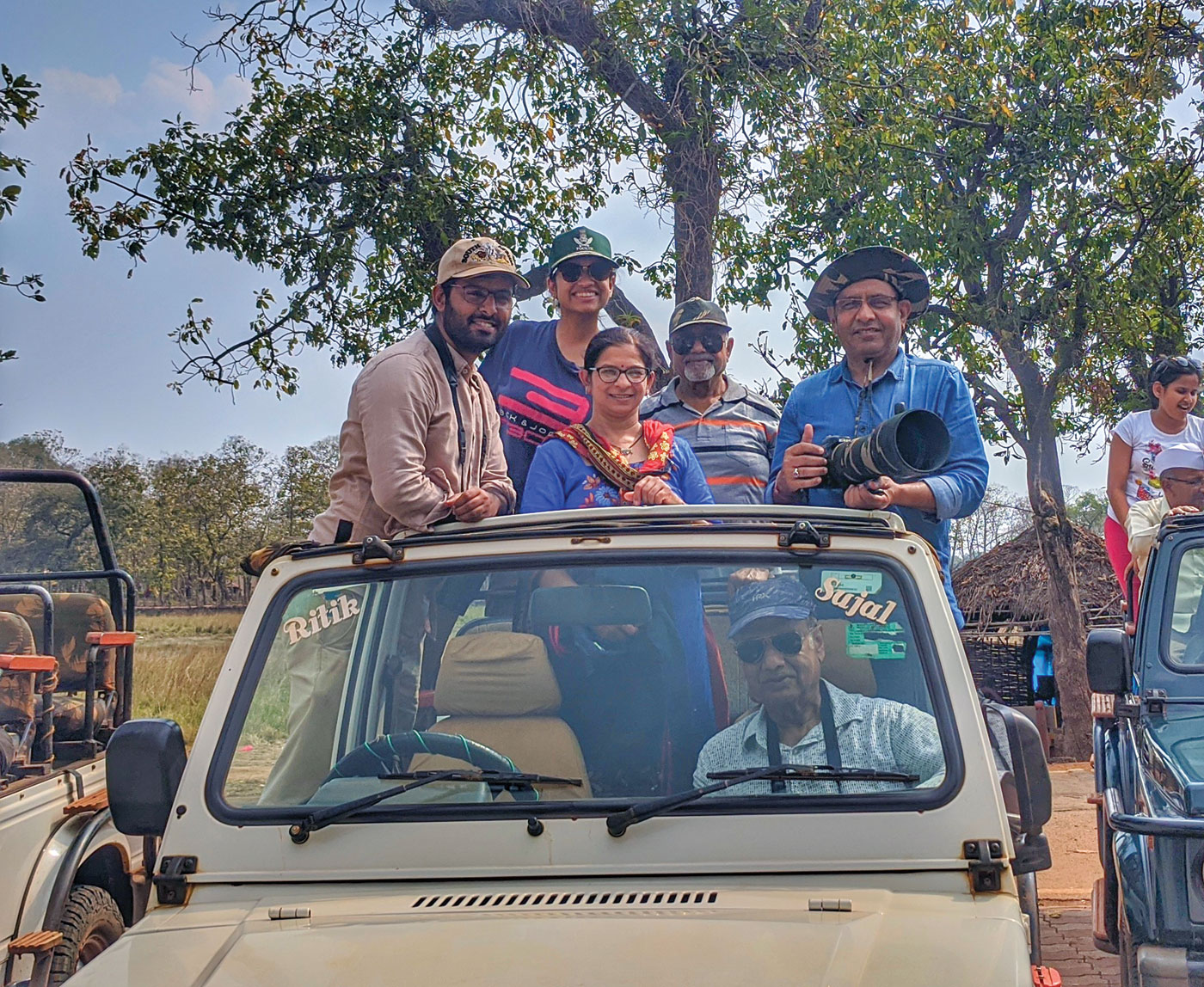
Founder of safari tour outfit Wilderlust Expeditions, Shashank Birla, is enthusiastic about how social media was a game changer in his journey. The very genesis of his safari tour outfit lies in the platforms of Facebook, Instagram, YouTube and WhatsApp. Photo Courtesy: Shashank Birla.
Harsha Tej, who works on lake restoration and other environmental issues, discovered the power of social media for environmental action by accident. His campaign on social media to raise funds for 100 saplings led to an overnight collection to plant and maintain five times of what he was hoping to collect!
“Over the past few months, my Instagram has blown up, and I’ve met a lot of interesting, incredible people. I have been able to amplify the message of sustainability with them to a far greater audience, and our campaigns have reached millions of views,” he says.
“We live in a day where there are too many terrible things happening. On my Instagram handle muddyfingerss, I share positive content, where people look forward to doing things rather than sitting around and crying about what’s happening. It motivates them to take things up on their own and take action for the environment. If people come to my page, they are often pleased to see some impact, and they can take away a message, tip or a lesson,” says Harsha happily.
Building a dedicated community for the environment excites Harsha. “I’ve always wondered… how am I going to fight this battle alone? I’ll need an entire army! And so, I use social media as a tool to connect people, and bring them together to help me. When there is a collaborative effort, there’s always a bigger impact. So even though I have to shoot, edit, and promote all my content on social media by myself, it’s never been a burden or overhead,” he shares.
Beyond raising awareness and inspiring action, Harsha has seen how social media can open doors to many great opportunities. “People are able to move towards a career in sustainability and environmental conservation, in addition to the traditional route of studying environmental science. For example, there are companies that manufacture covers out of biodegradable material, who are using social media for its promotion. Then there are individuals who promote sustainability. For instance Vani Murthy, known as wormrani, is a sensation! She posts videos about composting from her home garden, and has been able to convince people to turn their kitchen waste into compost.”
The Good, Bad And Ugly Of Social Media
Celebrities, brands and companies are increasingly using social media to express their support for specific causes. This is often to show their consumer base that they can trust a brand that is aligned with their beliefs. Sadly, in many cases the same brands or companies may conduct themselves in ways that contradict the values they seem to support. Consumers must do their due diligence before deciding to boycott or support, and be aware of the hidden lies of marketing.
Studies have also shown that activism via social networking sites is increasingly impacting mental health. Yash Marwah emphasises that it becomes very easy to get lured by the likes, comments and views. “It is very important to keep creating a community, break the echo chamber, and reach out to naysayers. And while doing this, it is of utmost importance to not limit our communication to aesthetic awesomeness, and ensure all the voices from the ground are being represented. While coming up with ingenious techniques to fool shadow bans and the algorithm can be exhausting, my biggest worry as a believer of climate justice is what if we start limiting our work to social media? Which is why, for a couple of years now, we are trying to learn and share our learnings about various tools through our workshops with campaigners. Each day, we realise how important it is becoming to break through the noise and use social media to highlight offline as well as online action.”
Harsha, however, views armchair activism more gently, “For people who don’t have the energy to step out and plant a tree or volunteer, the best way to engage is to sign a petition. So they might as well just use their phones to be a part of conservation. Any contribution matters; even reaching one or two per cent of the entire population can create a significant impact.”
Shashank Birla has faced challenges on social media, “Many users still need to be introduced to the nuances of wildlife conservation and tourism. In unfortunate cases, either from a very strong attachment to wildlife or based on incomplete information, kangaroo courts/public trials take seed, resulting in vilification and personal attacks on individuals. My hope is that with greater social media proliferation, stricter moderation standards would come into play, which would prevent any misuse of the platform, and foster more open debates and discussions that could lead to sustainable solutions to make an actual difference in wildlife conservation and tourism.”
Richa Kedia is not too concerned by negative interactions on the platform as she uses available protocols such as blocking, filtering and reporting effectively. With increasing online interactions, it is vital to set boundaries and protect our own mental well-being, she says. Kedia emphasises that social media is a powerful medium and its impact depends on how we use it. “I use it to my advantage positively and block out the negativity,” she says.
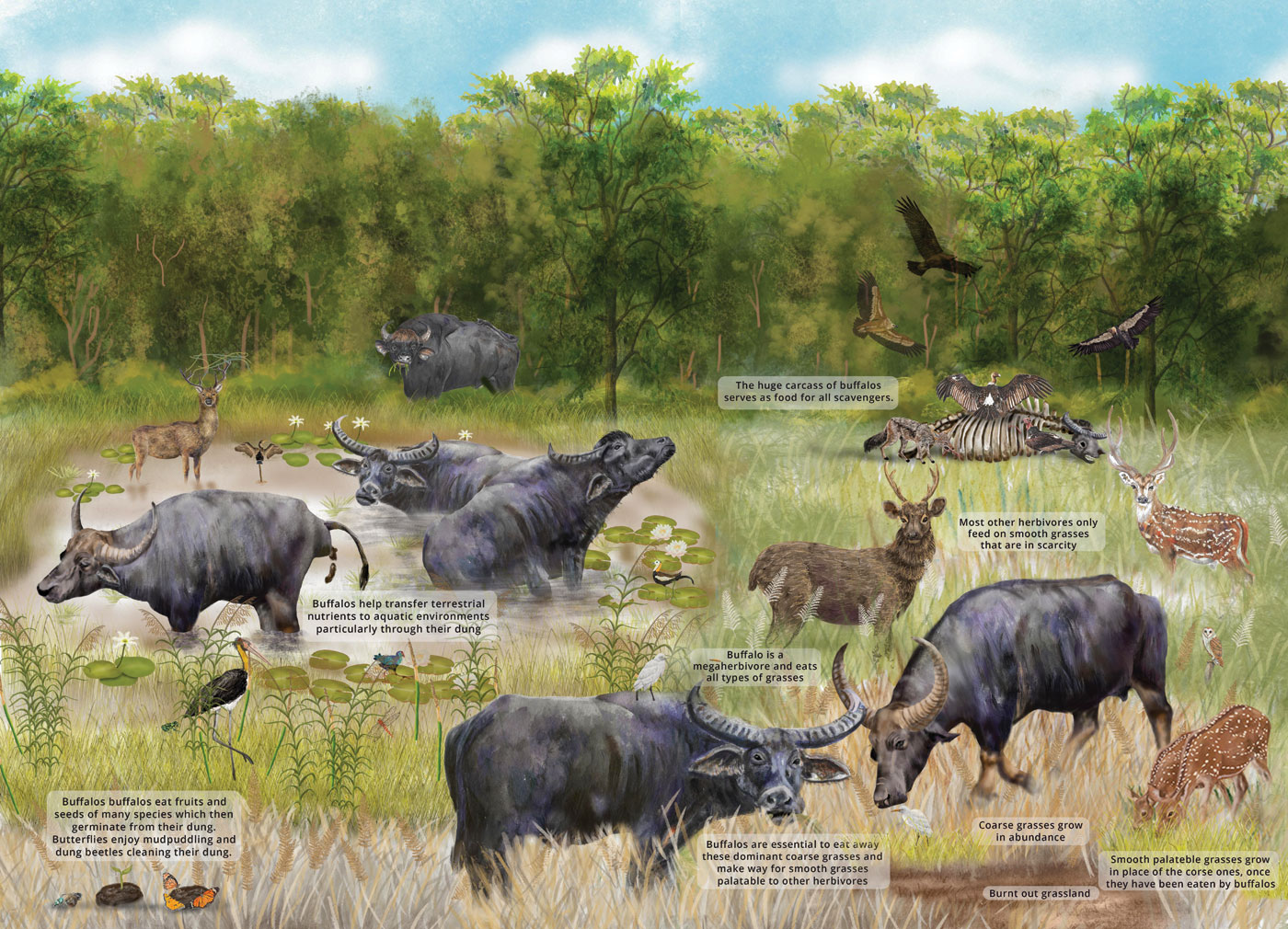
Richa Kedia, a former chemical engineer, quit her job to become a wildlife artist and illustrator. For her, social media has been an absolute boon. She finds it is an easy way to reach out to people with similar interests on social media. Photo: Richa Kedia.
Meanwhile, Siddharth Agarwal is concerned about the limited scope of social media across different social strata. “Startlingly different from legacy methods of outreach, it has allowed fresh ideas by people from all kinds of social and economic backgrounds to find space and support. However, this comes with a reminder that structural biases such as language, caste privilege, access to high-end equipment, etc. still continue to shape this space. And while I’m a strong advocate of using social media for advancing conservation efforts, I’m increasingly worried about how many extremely visible and popular ‘conservationists’ are actually not connected to the grassroots realities in any manner, or how their narratives are not built from practice. Along with this, many popular online accounts often align purely with Global North and Western narratives, for instance militant veganism as a virtue signal, harming efforts that are advocating for more inclusive and place-based conservation efforts within India. As we grow out of the limited structure of legacy media and conservation, we have the additional responsibilities of making platforms more inclusive, working genuinely towards diversification of voices, pushing for place-based narratives, and not limiting our conservation efforts to just online campaigns.”
Praveen Purohit and Harsha are worried about the ease with which misinformation spreads, exacerbated by short attention spans, making it convenient for people to believe whatever they see on the screen, without bothering to do any research.
Praveen believes it’s the ultimate responsibility of the creator to make sure that the information shared is correct. In his words, “Social media, like any other piece of technology, is a great boon. Any technology can be used both in good and bad ways, to spread goodwill, hope, information or to burn the world to ashes, to change how someone thinks, change their perception about nature and the world around them, to show governments and organisations what’s important for the masses, shape policies, and hopefully create changes that will help us conserve the only home that we have.”
The risks in communication worries Kayden Anthony too, who underscores the potential for misrepresentation of facts or the spread of misinformation, with some channels prioritising sensationalism for views, which can lead to harming wildlife (like staging animal behaviour and stressing the animal). He adds, “It’s crucial for creators like me who have been working in this field to counteract misinformation and provide accurate information through extensive research before making educational content but also accepting corrections.”
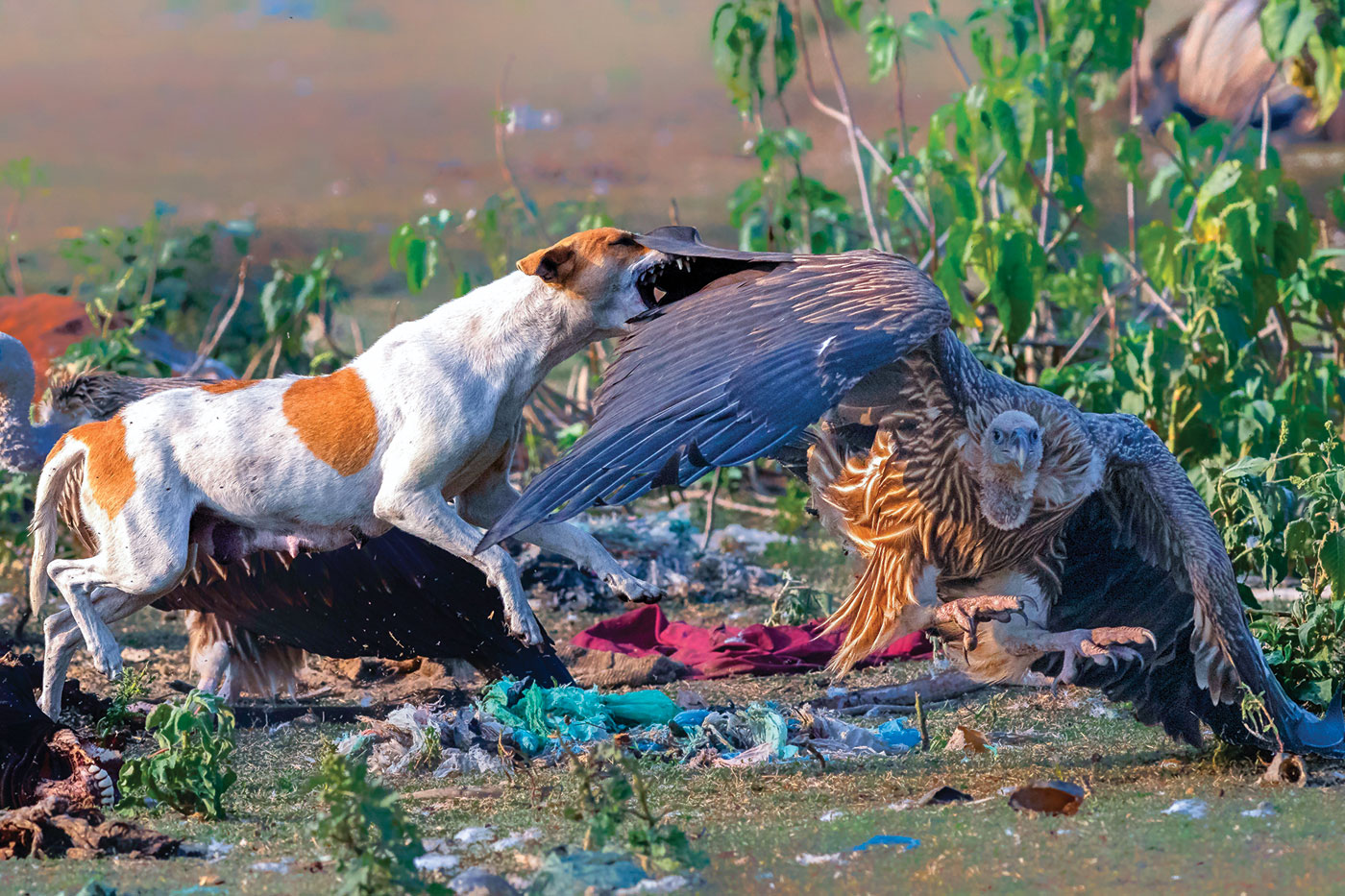
Social media is a double edged sword. Ideally, animal rights and nature rights individuals and species rights groups should be working together. But images such as this illustrate the flash point between the two factions. Irresponsible human behaviour serves as a breeding ground for stray dogs, many that have become feral hunters. This creates strong divides based on misconceptions, vilification and unseemly personal attacks on those holding opposing views. Photo: Mousan Ray/Sanctuary Photolibrary.
Social media algorithms are a mysterious creature, which every creator is vying to make friends with! Harsha has observed that the algorithm is tricky; sometimes it does really well, sometimes it doesn’t push across your message. “But that has not stopped me from trying. Sometimes content picks up at a later stage, when a viewer will remember a solution that I have shared, and reach out to me. Immediate conversion is never a guarantee, but creating awareness is the most important thing.”
FFF India’s Dinesh shares Agarwal’s concerns about social media privilege raising another key issue. “One of our concerns with social media is how it is increasingly becoming pay-to-win, and centralised in nature. A handful of influencers/handles/companies with little understanding of climate justice can become the face of the cause and control the narrative, by paying for verified badges and boosting their post’s engagement with money. This denies grassroots movements like ours to gain people’s attention, and people from oppressed backgrounds to raise their voices against the dominant narrative, which often limits the scope of action to individuals, and also requires one to be privileged. We’re also concerned about hate speech that comes along when we discuss sensitive, nuanced issues such as the impacts of the climate crisis on minorities or people from marginalised communities. Disinformation is a key risk as well, as it’s hard to build a successful campaign, and we need to be constantly on guard to counter false narratives that aim to derail our work or presence.”
Sanctuary’s Editor Bittu Sahgal has the final word, “I recall times when getting ANY issue that was even slightly contentious was impossible through regular media, the press, or Doordarshan. Today, social media is a two-edged sword and hordes of no-goods can be downright destructive, nasty, and even dangerous. But in the gaps between all these, there is space for some of us to broadcast issues that are not necessarily priorities for the government or corporations. This includes keeping forests intact, prioritising clean air and public transport over private cars, highlighting the destruction of open spaces, and more.
Sanctuary has a reach of over a million people between Facebook, X, Instagram, and YouTube. Of course we are bullied by the gods of social media into paying for extra reach. And all too often, the trolls have a field day at the behest of political parties, or those who do not like what we communicate. But we will beat them at their own game, because our content producer is wild nature, and nothing comes even close to the creativity it produces by the hour.”









